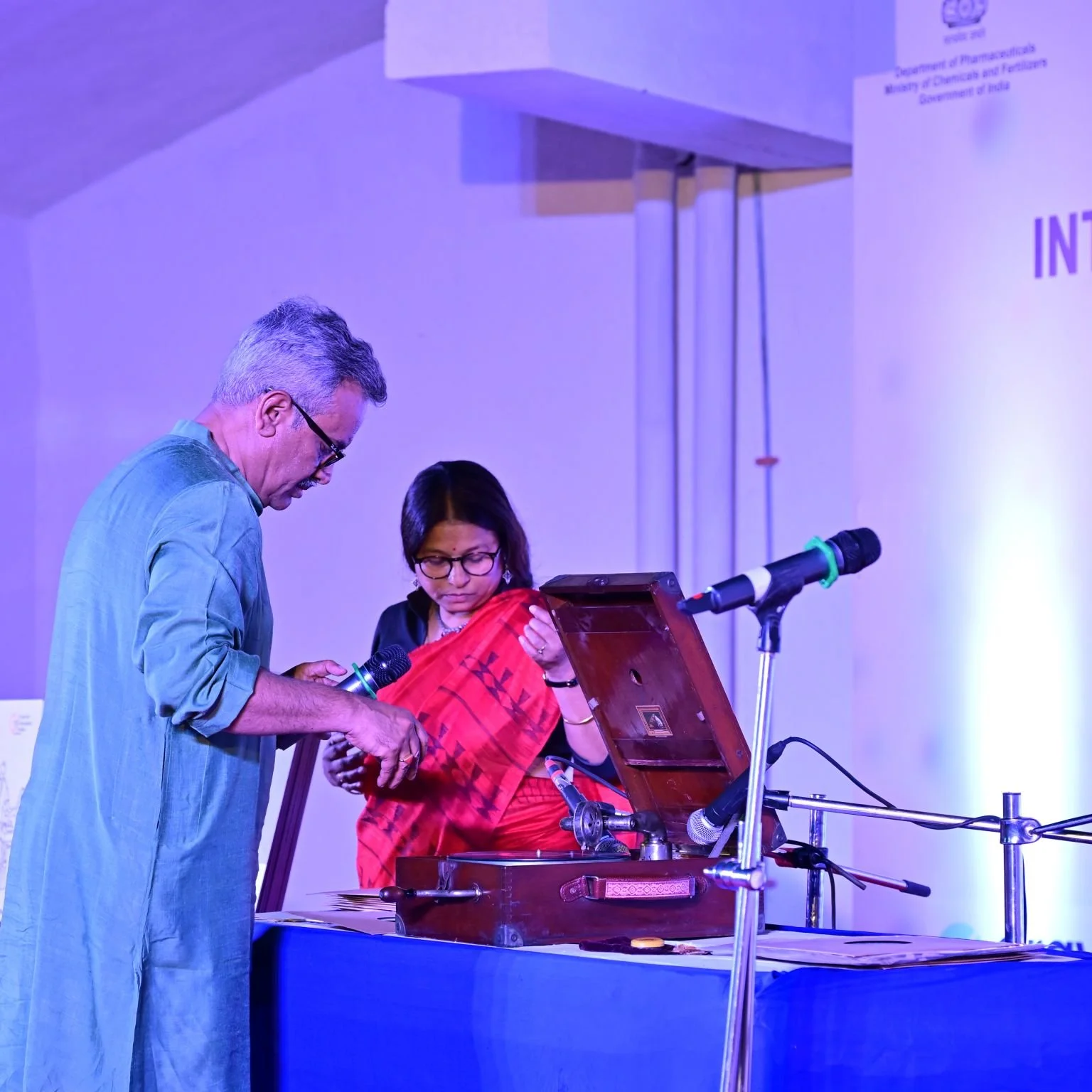The Science of Sound, the Spirit of India
Akhilesh Jha and Rashmita Jha at a Gramophone session in Ahmadabad
The gramophone offers a remarkable way to understand India’s passage through history. Through its crackling grooves, we witness how the nation kept pace with scientific progress—even in the most trying circumstances—and how it subtly shaped trade and cultural dynamics.
At NIPER, Ahmedabad, during an international conference on Central Nervous System Disorders, Rashmita Jha and I were invited to share India’s story through the medium of the gramophone. Amid an esteemed audience of scientists and researchers, we—coming from the Vishuddh world of arts—found a meaningful space to connect, converse, and contribute.
Our talk explored how #MadeInIndia and #Swadeshi were not merely ideas but powerful movements during India’s freedom struggle—movements that even gramophone recordings carried forward. We also reflected on how this beautiful technology shaped the early music industry and influenced cultural imagination.
One of the highlights of the evening was playing a historic recording of Vande Mataram to mark its 150th anniversary—a moment that resonated deeply with everyone present.
A warm thank you to #NIPERAhmedabad, and especially to Dr. Pallab Bhattacharya, for curating such an inspiring, thoughtfully organised event. Rashmita and I returned with renewed pride—and a few more patrons for the enchanting world of the gramophone.


